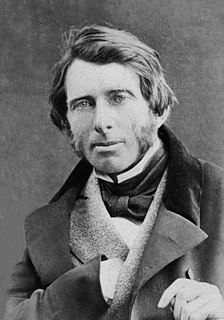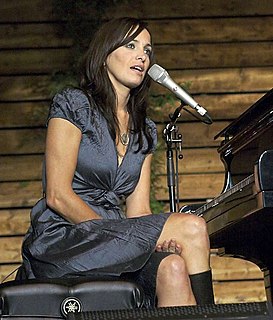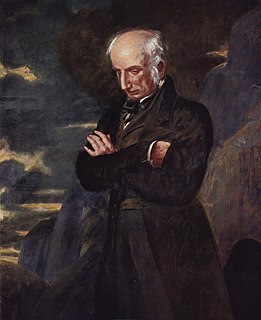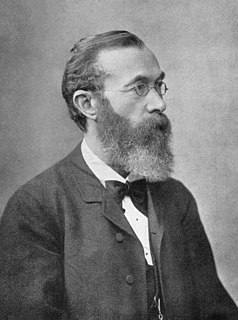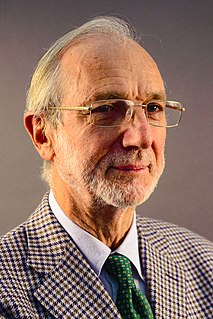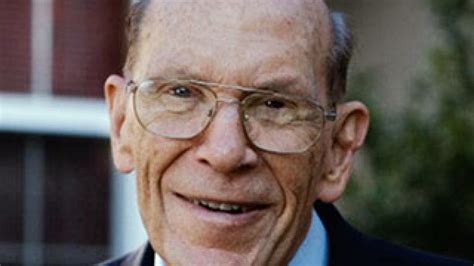A Quote by John Ruskin
Architecture is the art which so disposes and adorns the edifices raised by man, that the sight of them may contribute to his mental health, power, and pleasure.
Quote Topics
Related Quotes
Thoughts and emotions which never perhaps were in the mind of the artist, never were anticipated, never were intended by him - may be strongly suggested by his work. This is an important part of the morals of art, which we must never lose sight of. Art is not only for pleasure and profit, but for good and for evil.
We have no knowledge, that is, no general principles drawn from the contemplation of particular facts, but what has been built up by pleasure, and exists in us by pleasure alone. The Man of Science, the Chemist and Mathematician, whatever difficulties and disgusts they may have had to struggle with, know and feel this. However painful may be the objects with which the Anatomist's knowledge is connected, he feels that his knowledge is pleasure; and where he has no pleasure he has no knowledge.
There are certain topicks which are never exhausted. Of some images and sentiments the mind of man may be said to be enamoured; it meets them, however often they occur, with the same ardour which a lover feels at the sight of his mistress, and parts from them with the same regret when they can no longer be enjoyed.
One of the issues I think is very important, in many communities of color, there's a stigma about mental health. We find that the shaming that comes from acknowledging that one may have some issues that may relate to mental health, often people are not willing to go and seek additional help because of that shaming or that cultural stigma that's associated with it. And I think that we need to make this change in how people approach mental health.
The animal kingdom exhibits a series of mental developments which may be regarded as antecedents to the mental development of man, for the mental life of animals shows itself to be throughout, in its elements and in the general laws governing the combination of the elements, the same as the mental life of man.
It is comforting that travel should have an architecture, and that it is possible to contribute a few stones to it, although the traveller is less like one who constructs landscapes -- for that is a sedentary task -- than like one who destroys them. . . . But even destruction is a form of architecture, a deconstruction that follows certain rules and calculations, an art of disassembling and reassembling, or of creating another and different order.
Architecture is art. I don't think you should say that too much, but it is art. I mean, architecture is many, many things. Architecture is science, is technology, is geography, is typography, is anthropology, is sociology, is art, is history. You know all this comes together. Architecture is a kind of bouillabaisse, an incredible bouillabaisse. And, by the way, architecture is also a very polluted art in the sense that it's polluted by life, and by the complexity of things.
In a sermon entitled “God's Providence,” C. H. Spurgeon said, “Napoleon once heard it said, that man proposes and God disposes. 'Ah,' said Napoleon, 'but I propose and dispose too.' How do you think he proposed and disposed? He proposed to go and take Russia; he proposed to make all Europe his. He proposed to destroy that power, and how did he come back again? How had he disposed it? He came back solitary and alone, his mighty army perished and wasted, having well-nigh eaten and devoured one another through hunger. Man proposes and God disposes.
There are countries in which public establishments are considered by the government as its own personal affair, so that it admits persons to them only according to its pleasure, just as a proprietor refuses at his pleasure admission into his house; they are a sort of administrative sanctuaries, into which no profane person can penetrate. These establishments, on the contrary, in the United States, are considered as belonging to all. The prisons are open to everyone who chooses to inspect them ad every visiter may inform himself of the order which regulates the interior.
Museums and art stores are also sources of pleasure and inspiration. Doubtless it will seem strange to many that the hand unaided by sight can feel action, sentiment, beauty in the cold marble; and yet it is true that I derive genuine pleasure from touching great works of art. As my finger tips trace line and curve, they discover the thought and emotion which the artist has portrayed.
